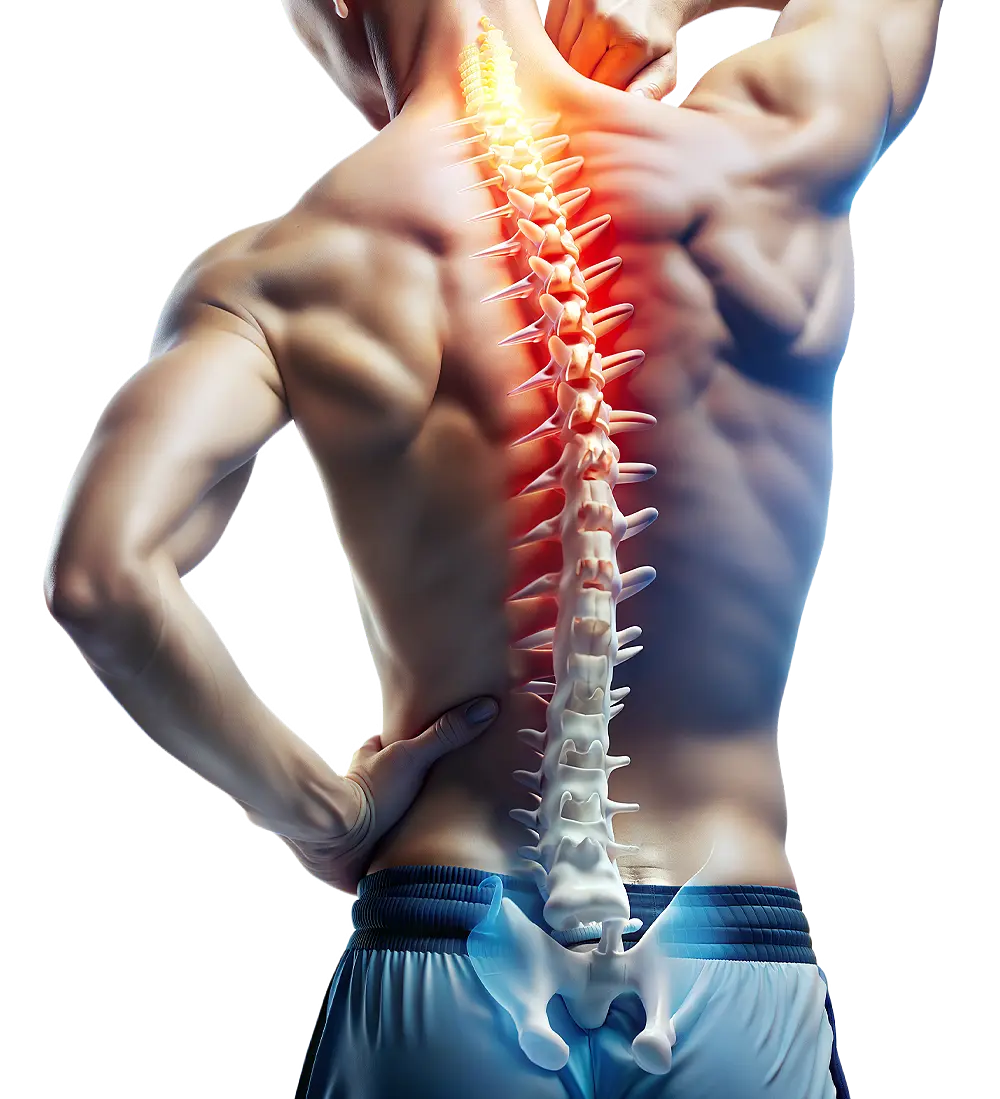
Southern Bone & Joints Specialists is fully staffed and equipped to treat the student athletes and “weekend warriors” in the Wiregrass and surrounding areas. The specialists at our Sports Medicine Center function as a team—a winning team of orthopaedic surgeons, physical therapists, and athletic trainers with an unbeaten record in treating common overuse and trauma-induced injuries. Our “mobile office” can be seen at all of the major athletic events of more than 30 high schools and junior colleges in the area.
As experts in sports medicine, our specialists can be trusted to recommend the best course of treatment for each individual. While some patients may require surgery, most can be treated more conservatively with medication and/or physical therapy and rehabilitation techniques. And to ensure a safe return to sports after treatment, prophylactic services such as prescription bracing and shoe orthotics are also provided.
Our Sports Medicine Clinic is equipped with the latest in diagnostic, treatment, and rehabilitation equipment and technology. We can perform the initial evaluation, provide any appropriate imaging needed, and institute subsequent treatment…all in one state-of-the-art center.
Athletes in Dothan, Alabama and throughout the Wiregrass region trust Southern Bone & Joints Specialists for comprehensive sports medicine care that gets them back in the game faster. Our dedicated Sports Medicine Center combines cutting-edge technology with personalized treatment approaches, ensuring every athlete receives the specialized care they deserve.
Expert Sports Medicine Team Serving Southeast Alabama
Our multidisciplinary sports medicine team brings together board-certified orthopedic surgeons, licensed physical therapists, and certified athletic trainers who understand the unique demands placed on athletes at every level. From high school football players to recreational tennis enthusiasts, our specialists have successfully treated thousands of sports-related injuries throughout Dale County, Houston County, and the surrounding Southeast Alabama communities.
The collaborative approach taken by our sports medicine professionals ensures that each patient receives comprehensive care tailored to their specific sport, injury type, and performance goals. Our team regularly attends continuing education seminars and maintains current certifications in the latest sports medicine techniques and rehabilitation protocols.
On-Site Athletic Training and Injury Prevention
Southern Bone & Joints Specialists goes beyond traditional clinic-based care by bringing our Friday Night Clinic to local football fields in the fall. This immediate response capability often prevents minor injuries from developing into more serious conditions that could sideline athletes for extended periods.
State-of-the-Art Diagnostic and Treatment Technology
The Sports Medicine Center at Southern Bone & Joints Specialists features the most advanced diagnostic equipment available in the Dothan area. Our facility includes digital X-ray systems, MRI capabilities, and ultrasound technology that allows for immediate, accurate diagnosis of sports injuries. This comprehensive diagnostic approach eliminates the need for multiple appointments and referrals, streamlining the treatment process for busy athletes.
Comprehensive Treatment for Common Sports Injuries
Southern Bone & Joints Specialists treats the full spectrum of athletic injuries commonly seen in high school, college, and professional sports. Our expertise includes treatment of ACL tears, meniscus injuries, rotator cuff problems, ankle sprains, stress fractures, and overuse injuries such as tennis elbow and runner’s knee. We also specialize in treating sport-specific injuries like pitcher’s shoulder in baseball players and jumper’s knee in basketball athletes.
Our conservative treatment approach prioritizes non-surgical interventions whenever possible, utilizing advanced techniques such as platelet-rich plasma (PRP) therapy, targeted injections, and specialized physical therapy protocols. When surgery is necessary, our orthopedic surgeons employ minimally invasive arthroscopic techniques that reduce recovery time and improve outcomes.
Customized Rehabilitation and Return-to-Play Programs
Recovery from sports injuries requires more than just treating the immediate problem. Our sports medicine team develops individualized rehabilitation programs that address strength deficits, flexibility limitations, and biomechanical issues that may have contributed to the original injury. These comprehensive programs help prevent re-injury while optimizing athletic performance.
Our return-to-play protocols follow evidence-based guidelines that ensure athletes are fully prepared for the demands of their sport before clearance is given. This methodical approach protects athletes from premature return that could lead to more serious injuries or prolonged recovery periods.
Preventive Care and Performance Enhancement
Beyond injury treatment, Southern Bone & Joints Specialists offers comprehensive preventive care services designed to keep athletes healthy and performing at their best. Our sports medicine professionals provide pre-season physical examinations, biomechanical assessments, and nutritional counseling that help athletes optimize their training and reduce injury risk.
Custom orthotics and bracing solutions are available for athletes with specific biomechanical needs or those recovering from previous injuries. These devices are carefully fitted and designed to provide optimal support while maintaining the mobility and performance characteristics required for each sport.
Serving the Wiregrass Athletic Community
For over two decades, Southern Bone & Joints Specialists has been the trusted sports medicine provider for athletes throughout Southeast Alabama. Our commitment to excellence in sports medicine care, combined with our deep understanding of the local athletic community, makes us the preferred choice for athletes, coaches, and parents seeking the highest quality sports medicine services in the region.
Whether you’re dealing with an acute injury or looking to optimize your athletic performance, our sports medicine team is ready to help you achieve your goals safely and effectively.

When more than physical therapy is required, advanced arthroscopic procedures provide a minimally invasive alternative to major corrective surgery. In arthroscopic surgery, an arthroscope is inserted through a tiny incision into an injured joint to enable the surgeon to view the joint on a video monitor and perform the needed surgical repair. Common sports-related orthopaedic disorders that can be treated arthroscopically include torn cartilage (meniscus) and ligaments in the knee and shoulder, and inflammation of the synovium (lining) and loose bone or cartilage fragments in the knee, shoulder, elbow, wrist, and ankle.
Injured athletes with a torn anterior or posterior cruciate ligament (ACL and PCL) or medial collateral ligament (MCL) in the knee frequently opt for arthroscopic surgery in order to regain full function.
During the procedure, holes are drilled in the tibia and femur exactly where the original ligament was attached. A tendon graft taken from the patient’s patellar tendon is then pulled through the hole and is secured in place with surgical screws. This allows for new blood vessels to grow into the tendon graft and for healing to occur. While the procedure is typically performed on an outpatient basis, it can take up to 9 months to fully recover.
A common sports injury is shoulder instability—the partial or complete dislocation of the head of the humerus (arm) bone from the shoulder socket. In younger, more athletic patients, arthroscopic surgery is recommended to prevent future dislocations. Torn ligaments can be reattached with small tacks inserted arthroscopically; stretched ligaments can be tightened with sutures or with a new arthroscopic procedure that uses heat to shrink tissue—thermal capsulorrhaphy.
The rotator cuff is a set of four muscles connected to the humerus bone that keep it from dislocating, and rotator cuff injuries are a frequent reason for visiting our Sports Medicine Center. Repetitive, overhead motions can result in inflammation, or tendonitits, and small tears in the rotator cuff, which can usually be treated with medication and physical therapy. In younger, and even older, athletic patients, arthroscopic surgery is recommended to restore full function. Physical therapy after surgery is vital to prevent “frozen shoulder”.
When more conservative treatments are exhausted, corrective surgery like total joint replacement may be considered. If so, you can be sure that the our Southern Bone& Joint orthopaedic surgeons will provide you with: